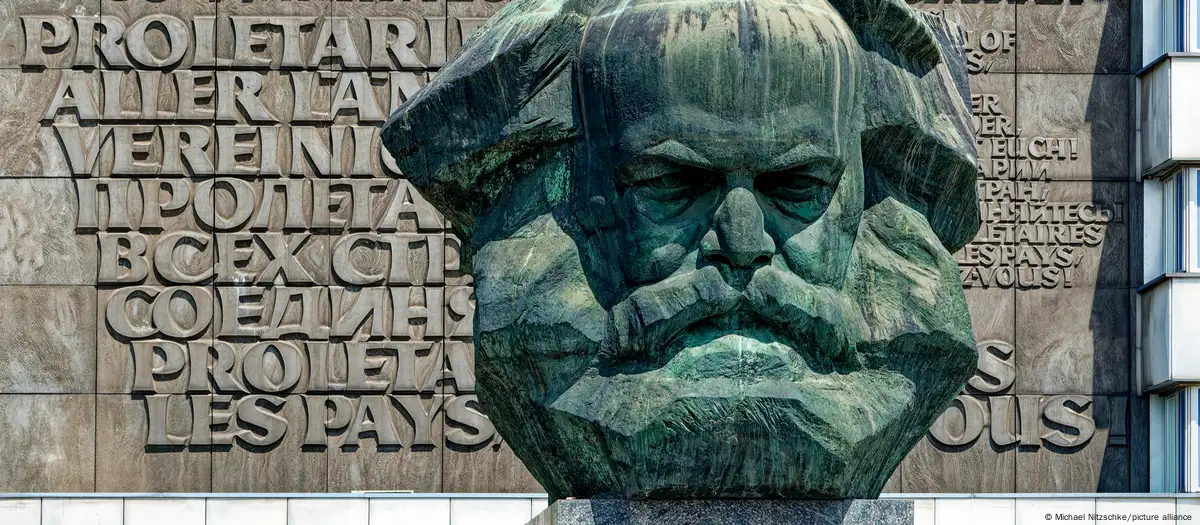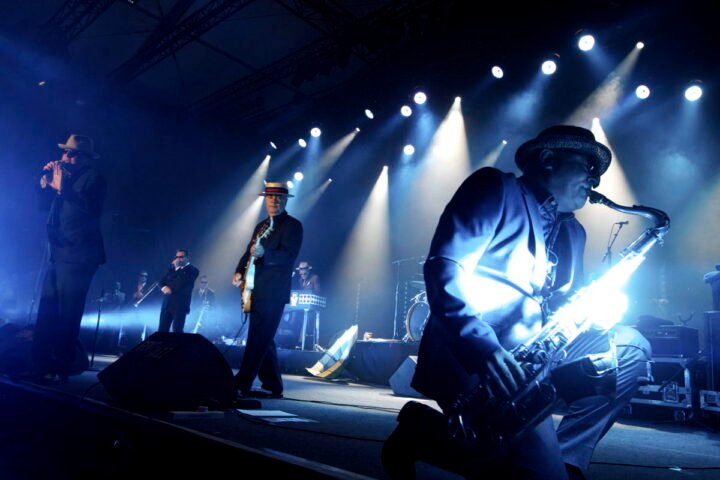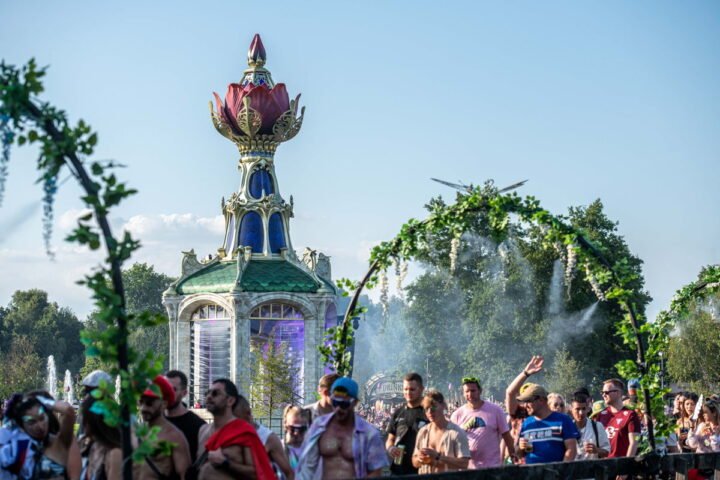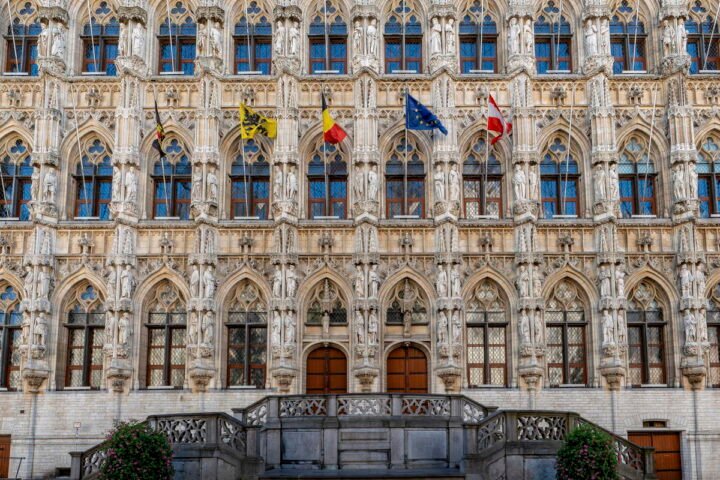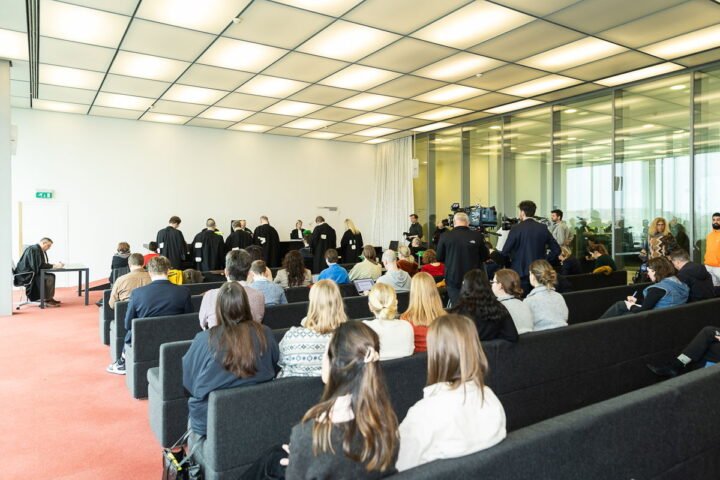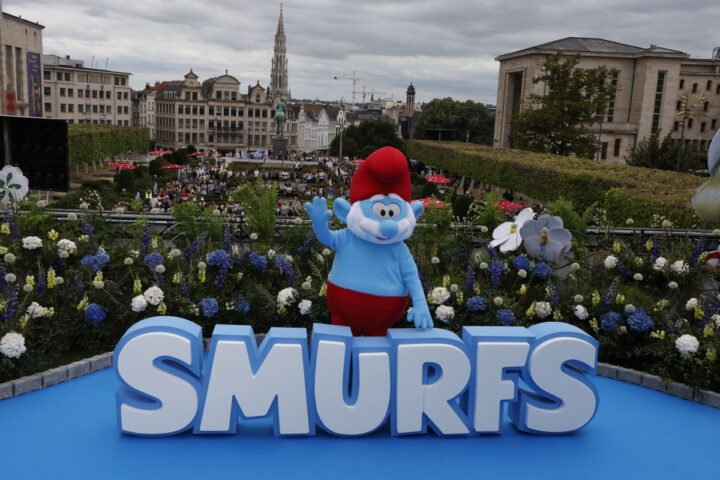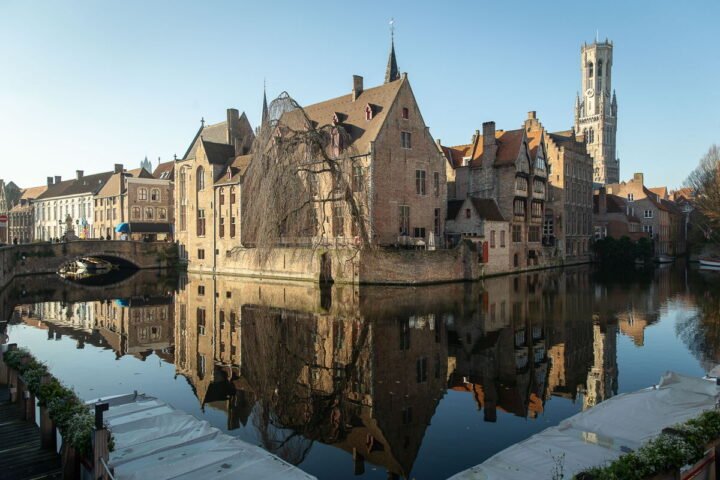What is Karl Marx’s statue doing in Chemnitz, though he never visited the city? And why is Nova Gorica/Gorizia considered a divided city? Meet the European Capitals of Culture 2025.
Since 1971, downtown Chemnitz has been home to one of the largest portrait busts of Karl Marx in the world. “Karl Marx needs no legs, no hands, his head says it all,” the statue’s sculptor, Soviet artist Lev Kerbel, reportedly said.
The bust of the philosopher and social theorist has become an iconic symbol of Chemnitz. It has even given rise to the eastern German city’s nickname: “Schädelstätte,” roughly “cranium city.”
So what does Karl Marx have to do with Chemnitz? On a personal level, not very much. Marx was born in Trier and died in London; he never even visited Chemnitz.
Following World War II, the city became part of German Democratic Republic. The GDR’s communist government didn’t see the need for a biographical connection in order to rename the city Karl-Marx-Stadt, or Karl Marx City. The GDR’s prime minister at the time, Otto Grotewohl, justified the decision with the city’s labor movement roots and its status in the eyes of the regime as an ideal model of socialism.

Located in the German state of Saxony on the border with the Czech Republic, Chemnitz has a long history as a leading industrial city that predates the founding of the GDR. The textile, machinery, railroad and car industries were well-established there in the 18th and 19th centuries. Mining in the nearby Ore Mountains also made the region an economic powerhouse. Chemnitz was colloquially referred to as the “Saxon Manchester,” after the English industrial metropolis.
Following the fall of communism in Eastern Europe, Karl Marx City experienced structural change, and also a name change: 76% of the city’s inhabitants voted to revert to the old name of Chemnitz.

Compared with other formerly communist cities such as Leipzig, Dresden and East Berlin, Chemnitz’s prominence has been rather muted since German reunification. However, in 2018 the city made national and international headlines after anti-racism demonstrators clashed with xenophobic and extreme-right-wing groups in the aftermath of the violent death of a German-Cuban man.
‘C the Unseen’: Discovering Chemnitz’s diversity
In 2025, Chemnitz and the surrounding communities will co-hold the title of European Capital of Culture. Chemnitz’s motto for the year is “C the Unseen.” The program’s projects are grouped around themes including “Eastern State of Mind,” “Generous Neighbors” and “European Makers of Democracy.”
One project highlight is #3000Garagen, or 3,000 garages. During the GDR time, garages were built all over the city. They served not only as places to park cars but also communal meeting spaces, or places of private retreat.
A portrait exhibition of the same name tells the stories of the garage owners’ lives in Karl Marx City, as well as during the years before and after reunification.
Nova Gorica, Gorizia, Görz
This year, for the first time, cities in two countries are being presented together as one capital of culture while also presenting themselves individually: Nova Gorica in Slovenia and Gorizia in Italy, which together once made up a single city.

Founded around 1,000 AD, the city was the home of the Count of Görz, a royal house that was one of the most important ruling dynasties in the southern Alps. The Habsburg Empire later took over the city, which was still called Görz. It was a vibrant, cosmopolitan city — German, Italian and Slovenian could all be heard in the streets.
Following World War I and the fall of the Habsburg monarchy, Görz became Italian and was renamed Gorizia. The Slovenian inhabitants were forced to assimilate, ending the city’s cultural diversity.
Things changed once again after the end of World War II. Most of the city remained Italian, but Josip Broz Tito, the prime minister of Yugoslavia, of which Slovenia was a part, didn’t want to relinquish the historical location. He founded the city of Nova Gorica, or “new Gorizia,” in the neighboring meadows. It was a planned city, modern and functional.
This cemented the border between Slovenian Nova Gorica and Italian Gorizia. Families were separated, land was redistributed and mistrust grew on both sides. The Cold War between East and West played out in a small city, with each side alleging the other was fascist or communist.

The border persisted for 16 years after Slovenia’s independence from Yugoslavia. It was only after Slovenia joined the European Union in 2004 and the Schengen zone of free movement in 2007 that the two municipalities could work together to create a shared history. In 2025, the cities will serve as a joint European Capital of Culture.
Fostering European unity and belonging
The motto of Nova Gorica/Gorizia’s program, “Borderless,” needs no explanation. A place of division has now become one of unity.
Though architectural differences remain visible, with decorated facades in the old Italian city center and blocky socialist buildings in the Slovenian part, the area’s stunning nature is and has always been shared, from the turquoise-colored Soca River to the green Vipava Valley.

In 2025, the European Capitals of Culture program will celebrate places that have overcome division and tumultuous times of transition. The cities are unique, innovative, diverse — worth a visit, in other words. And that is precisely the aim of the European Capitals of Culture program: supporting diversity but also the unity shared by cultures, thereby fostering a sense of European belonging.
The program was founded in 1985 in a push from Greek Culture Minister Melina Mercouri.
Chemnitz is the fourth German city to be named a cultural capital. The opening ceremony takes place on January 18. The city’s program book, which was presented in October, is more than 400 pages long and lists about 150 projects and 1,000 events.
The opening ceremony in Nova Gorica/Gorizia is set for February 8 and will begin with a parade from the train station in Gorizia to the train station in Nova Gorica.
